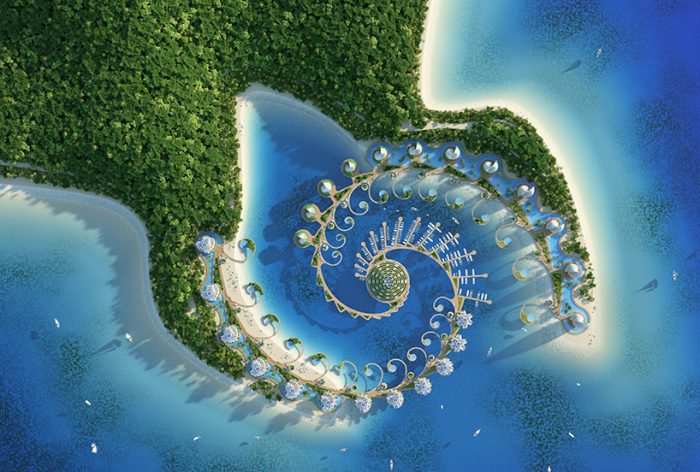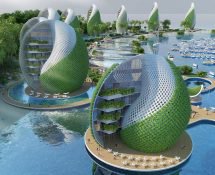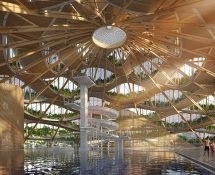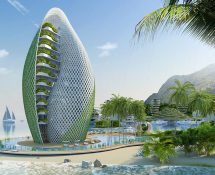Eco-resort in the Philippines - Luxury Retail
Vincent Callebaut proposes spiral-shaped eco-resort for the Philippines
Belgian architect Vincent Callebaut has designed an eco-resort in the Philippines, which promises ‘zero-emissions, zero-waste, and zero-poverty’.
The design is a response to the current environmental state of the country, which is under threat from over-fishing, mass tourism, and pollution in the form of plastic waste and toxic products.
‘Tourism has become the most important industry at the international level,’ says callebaut. ‘its potential to contribute to sustainable development is therefore substantial and can be reinvented. since the early 1980s, ecotourism has been exploring ways to reconcile the socio-economic development of our societies with the protection of the environment.’
Vincent Callebaut’s ‘nautilus eco-resort’ seeks to to unite the knowledge of the scientific community with the willingness of eco-tourists to help revitalize and protect the delicate environment.The structures themselves are based on biomimicry, with forms inspired by the shapes and structures of various ecosystems. The project would be completely built from reused or recycled materials, and would be entirely self sufficient in terms of both energy and food. Crowdfunding would be used to ensure the site’s conservation, while directly supporting local economic development in the form of jobs and income. Volunteer ecotourists would help clean the washed-up plastic waste from beaches.
The eco-resort’s two main architectural entities — a series of shell-shaped hotels and rotating apartment towers — are organized in a spiral around a central island, which hosts the nautical center and the scientific research laboratories. The façades and roofs combine plant walls and photovoltaic cells to increase the buildings’ thermal inertia, optimize natural cooling, and generate electricity. Rainwater is re-used, while gray water is biologically recycled in waste stabilization ponds bordering the gardens.
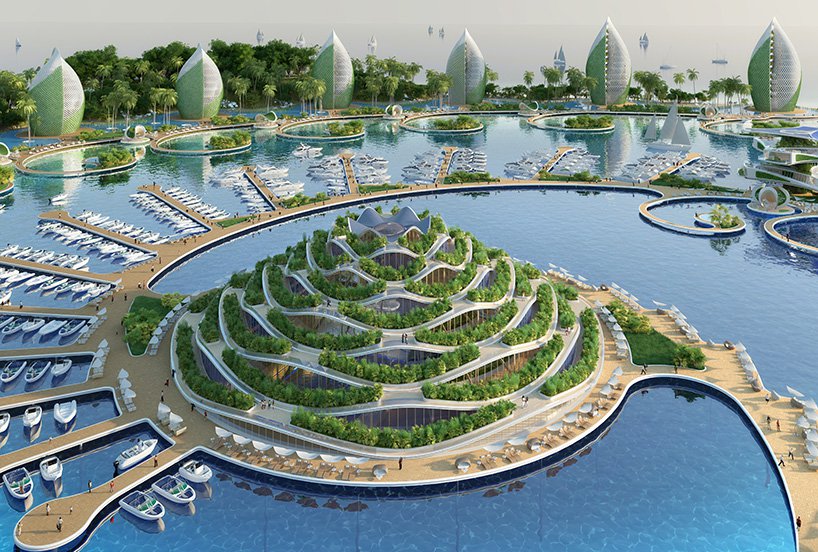
To the east, 12 small spiral towers of varying heights contain apartments that rotate to follow the course of the sun. Distributed in three branches, the 162 apartments rotate 360 degrees in one day to offer sweeping views across the landscape. meanwhile, to the west, 12 small museum-hotels in the form of a sea snails seem to emerge out of the water. A series of small pavilions, which invite ecotourists to rest and relax, punctuate the quays. Finally, an ‘origami mountain’ at the center of the lagoon contains the scientific research center and the nautical recreation base.

